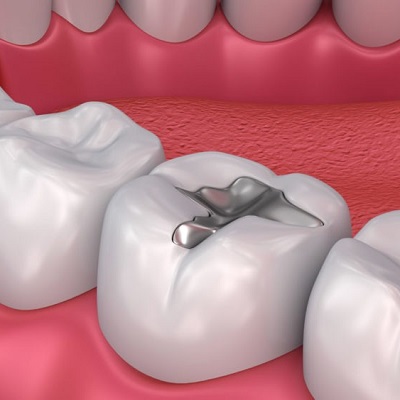When it comes to dental fillings, choosing the right material is essential for both functionality and aesthetics. Best Dental Tooth Filling Clinic Dubai, where advanced dental care is available, understanding the differences between composite and amalgam fillings can help you make an informed decision about your dental health. Here's a comprehensive comparison of composite and amalgam fillings, including their advantages and disadvantages, to help you determine which might be better suited to your needs.
Composite Fillings
What Are Composite Fillings?
Composite fillings are made from a tooth-colored resin material that can be easily shaped to match the natural contours of your teeth. They are designed to blend seamlessly with the surrounding tooth structure, making them a popular choice for visible areas.
Advantages of Composite Fillings
- Aesthetic Appeal
- Natural Look: Composite fillings are available in various shades to match the color of your natural teeth, making them ideal for filling cavities in visible areas like the front teeth.
- Improved Appearance: They blend well with existing teeth, providing a more aesthetically pleasing result compared to amalgam fillings.
- Minimally Invasive
- Conservative Preparation: Composite fillings require less removal of healthy tooth structure compared to amalgam fillings, as the resin bonds directly to the tooth, preserving more of the natural tooth.
- Versatility
- Multiple Uses: Besides filling cavities, composite resin can be used for cosmetic improvements, such as repairing chipped or cracked teeth.
- Bonding Strength
- Enhanced Adhesion: The resin bonds chemically to the tooth, which can provide additional strength and support to the tooth structure.
Disadvantages of Composite Fillings
- Durability
- Wear and Tear: Composite fillings may wear out more quickly than amalgam, especially in areas with heavy chewing pressure, and may need to be replaced sooner.
- Cost
- Higher Price: Composite fillings are typically more expensive than amalgam fillings due to the material and the labor-intensive application process.
- Time-Consuming Procedure
- Multiple Steps: The placement of composite fillings often requires multiple steps and may take longer to complete compared to amalgam fillings.
Amalgam Fillings
What Are Amalgam Fillings?
Amalgam fillings are made from a mixture of metals, including silver, mercury, tin, and copper. They have been used for over a century and are known for their durability and strength.
Advantages of Amalgam Fillings
- Durability
- Long-Lasting: Amalgam fillings are highly durable and can withstand significant chewing pressure, making them a suitable choice for back teeth where the force of chewing is greatest.
- Resistant to Wear: They are less likely to crack or break over time compared to composite fillings.
- Cost-Effective
- Affordable: Amalgam fillings are generally less expensive than composite fillings, making them a cost-effective option for many patients.
- Quick Placement
- Faster Procedure: The placement of amalgam fillings is typically quicker and less technique-sensitive compared to composite fillings.
Disadvantages of Amalgam Fillings
- Aesthetic Concerns
- Visible Appearance: Amalgam fillings are silver-colored and can be noticeable when placed in visible areas, which may be a concern for patients seeking a more natural appearance.
- Removal of Healthy Tooth Structure
- More Invasive: To place an amalgam filling, more of the healthy tooth structure may need to be removed compared to composite fillings.
- Potential Sensitivity
- Thermal Sensitivity: Amalgam fillings can expand and contract with temperature changes, which may cause some sensitivity or discomfort in certain cases.
Choosing the Right Filling for Dubai Residents
1. Aesthetic Preferences
- If you are concerned about the appearance of your fillings and want a natural look, composite fillings are the better choice. They are ideal for visible teeth and provide a more discreet solution.
2. Durability and Function
- For fillings in back teeth where durability and strength are essential, amalgam fillings may be more suitable. They are highly resistant to wear and can handle the pressures of chewing effectively.
3. Cost Considerations
- If budget is a concern, amalgam fillings offer a cost-effective solution while still providing excellent durability and functionality.
4. Procedure and Maintenance
- Composite fillings may require more meticulous placement and may need to be replaced sooner, while amalgam fillings are quicker to place and generally last longer.
Conclusion
Both composite and amalgam fillings have their unique advantages and are suitable for different situations. Composite fillings offer a more natural appearance and are ideal for visible teeth, while amalgam fillings provide exceptional durability and cost-effectiveness. In Dubai, where advanced dental care is accessible, you can discuss your specific needs and preferences with your dentist to choose the most appropriate filling material for your situation.





Comments